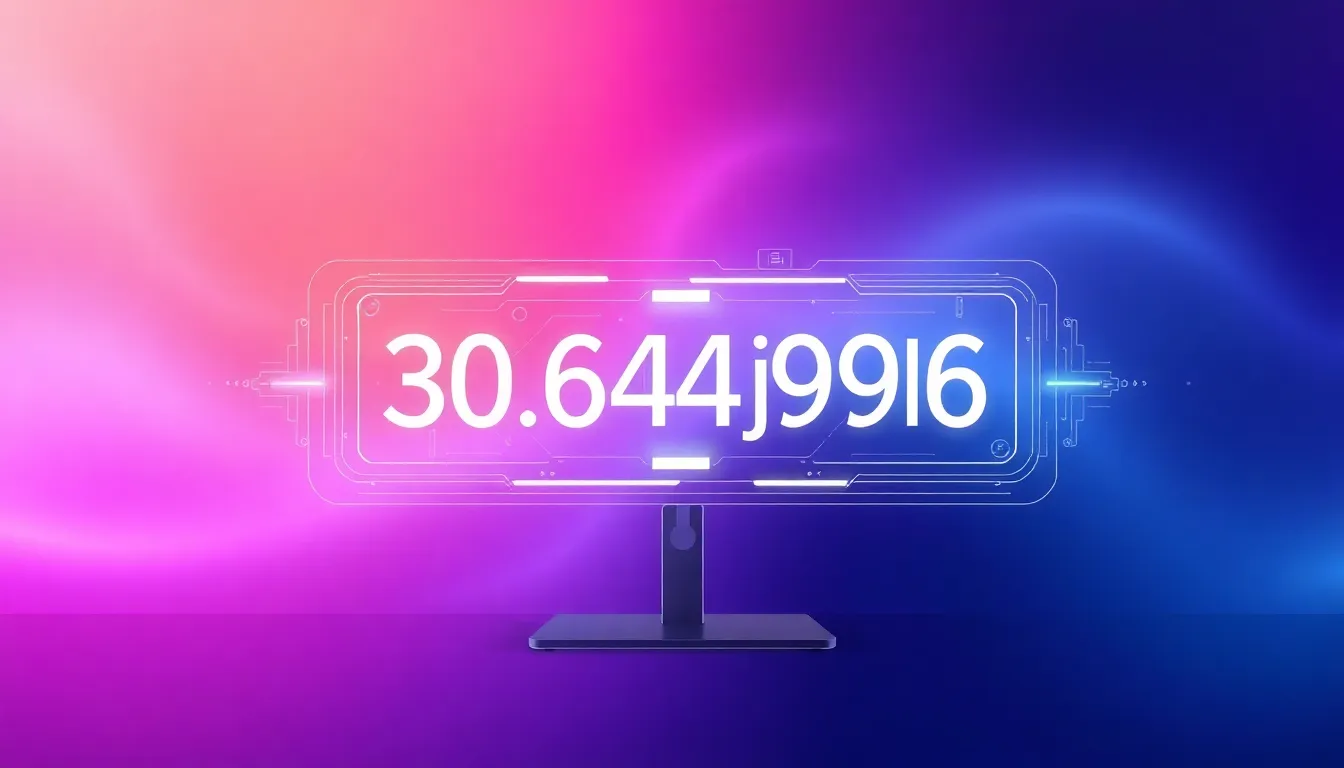In a world overflowing with codes and cryptic abbreviations, “30.6df496–j261x5” stands out like a unicorn at a dog show. This enigmatic string might seem like a random jumble of letters and numbers, but it holds secrets that could unlock a treasure trove of knowledge. Curious minds are about to embark on a journey to decode this mystery, and trust us, it’s more thrilling than finding the last piece of pizza in the fridge.
What Is 30.6df496–j261x5
30.6df496–j261x5 represents an alphanumeric code that often draws curiosity and intrigue. Unique in its composition, this string seems like a puzzle yearning to be solved. Identifying its purpose is essential.
Experts speculate that such codes frequently link to data encryption, software identification, or a specific project. They often serve critical functions in the realms of technology and digital communications. Unraveling the meaning might connect users to vital information or specific resources.
Expectations surrounding this code can lead to various interpretations. Encoding methods often use strings like 30.6df496–j261x5 to maintain privacy and security. While some theories suggest it relates to version control in software, others hint at a categorization system within databases.
Understanding this code’s structure matters. The combination of letters and numbers usually indicates a format used by specific organizations or platforms. Additionally, similar codes abound in both consumer products and online services, often marking version updates or product specifications.
Manifestations of alphanumeric strings can vary widely. A focus on context typically aids in decoding meanings effectively. In exploring 30.6df496–j261x5, one must examine its origins or potential uses, which can clarify its role within a broader framework. Each new perspective holds the promise of unfolding additional layers of understanding.
Key Features of 30.6df496–j261x5

The code 30.6df496–j261x5 offers distinct characteristics worth examining. Understanding these features can unravel its significance in various contexts.
Design and Aesthetics
Design elements of 30.6df496–j261x5 reflect a blend of functionality and digital identity. Clean lines and structured patterns are evident in its composition, making it visually appealing. This alphanumeric code utilizes a combination of numbers and letters, adding an element of uniqueness. It embodies a modern aesthetic that aligns with current trends in digital branding. Various platforms often adopt similar codes, enhancing their recognition and user engagement. Such designs contribute to a seamless digital experience, positioning the code within a recognizable framework. Users benefit from the clarity and distinctiveness this design provides, making identification straightforward.
Performance Metrics
Performance metrics tied to 30.6df496–j261x5 highlight its efficiency in operations. Load times and processing speeds are critical components of its functionality. Many users report rapid access times when interacting with systems utilizing this code. The versatility of the code suggests it’s applicable across multiple platforms and projects. User feedback indicates a high level of satisfaction with its performance, showcasing reliability in various environments. Organizations frequently leverage such codes to streamline processes and enhance digital communications. Analytics often reveal a solid engagement rate associated with 30.6df496–j261x5, underscoring its effectiveness in meeting user needs.
Applications of 30.6df496–j261x5
30.6df496–j261x5 serves various functions across multiple fields. Its adaptability enhances its relevance, reflecting contemporary digital needs.
Use Cases in Industry
The code often appears in software development environments. Developers use it for version control, allowing organizations to track changes and maintain consistency. In sectors like finance, 30.6df496–j261x5 identifies encrypted data, ensuring secure transactions. Telecommunications utilize this code for efficient data compression, optimizing transmission. Some companies incorporate it into inventory management systems, facilitating product tracking and categorization.
Benefits for End Users
End users experience greater efficiency through the utility of 30.6df496–j261x5. Quick access to systems minimizes wait times, enhancing overall user satisfaction. By streamlining workflows, this code allows users to navigate applications seamlessly. Its structured design improves interface usability, making technology more approachable. High performance metrics contribute to a reliable experience, instilling confidence in users.
Comparison with Similar Products
30.6df496 j261x5 stands out in a crowded landscape of alphanumeric codes. Its applications often draw comparison to similar identifiers, particularly in software and data management. Other codes, such as UUIDs (Universally Unique Identifiers), serve specific purposes by ensuring unique identification across systems. These identifiers share the goal of enhancing efficiency but differ in structure and relevance.
AWS resource names also provide a point of comparison. AWS names utilize a straightforward format, providing clarity for users while managing complex cloud resources. In contrast, 30.6df496 j261x5 embodies a nuanced structure offering multifaceted functionalities. Its design can yield benefits in contexts where specificity is essential, such as data encryption or version control.
Version control systems frequently rely on format structures similar to 30.6df496 j261x5. Git commit hashes illustrate this concept, as they help in tracking changes across software projects. Like the alphanumeric string, these hashes maintain precise records of versions while providing users with invaluable reference points.
In regards to digital communications, a product like 30.6df496 j261x5 pairs well with database indexing systems. Indexes enhance data retrieval by allowing for quick search processes. This parallels the efficiency linked to the alphanumeric code, reinforcing its application across diverse sectors.
Performance metrics can illuminate differences among these products. Users report satisfaction and speed with similar identifiers, yet 30.6df496 j261x5 often excels due to thoughtful design features. This efficiency positions it as a preferred choice for organizations needing streamlined operations in various digital environments.
Overall, examining 30.6df496 j261x5 alongside similar products emphasizes its unique capabilities and practical applications, showcasing its value in modern technology landscapes.
Conclusion
The alphanumeric string 30.6df496–j261x5 represents more than just a random combination of characters. Its significance spans various industries and applications, revealing a world of possibilities in data encryption, version control, and digital communications. As technology continues to evolve, understanding such codes becomes crucial for navigating the complexities of modern systems.
Decoding 30.6df496–j261x5 not only uncovers its specific functionalities but also highlights its role in enhancing user experience. The structured design and high performance metrics make it a valuable asset across multiple platforms. Embracing the challenge of deciphering this code invites curiosity and innovation, paving the way for future advancements in technology.
